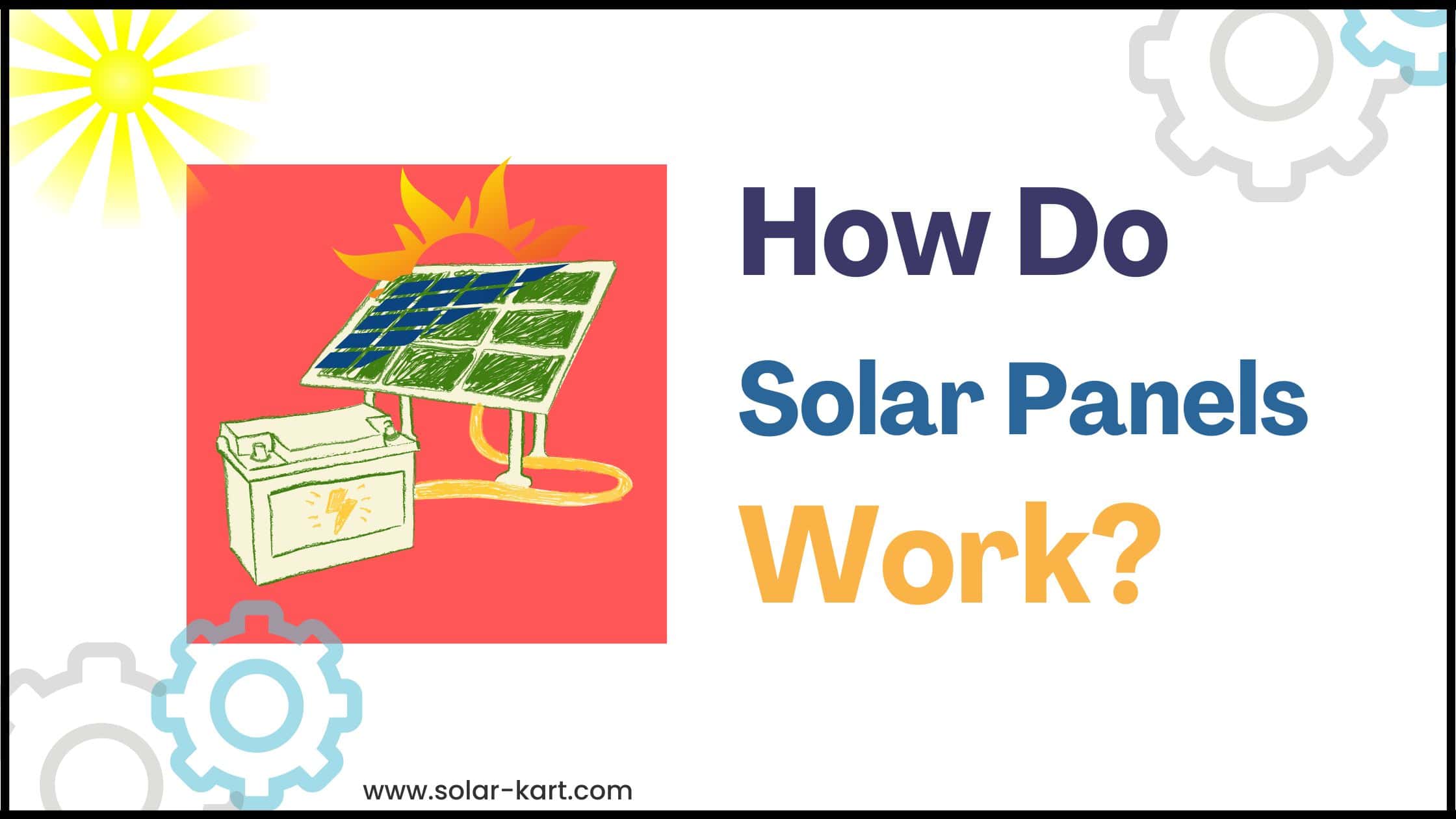Solar panels are becoming a popular choice for generating clean and renewable energy. This is the best way to use the sun’s power and convert it into electricity. But how exactly do solar panels work? In this blog, we’ll break down the process in simple terms, covering the basics of how does solar panel work, their components, and the benefits of using solar energy.
The Basics of Solar Power:
Solar power is energy from the sun that is converted into thermal or electrical energy. Solar panels, also known as photovoltaic (PV) panels, are the devices used to capture and convert sunlight into electricity. This electricity can then be used to power homes, businesses, and even vehicles.
How Solar Panels Work: Step-by-Step
1. Sunlight Hits the Solar Panels
Solar panels are made up of many small units called solar cells. These cells are typically made of silicon, a semiconductor material. When sunlight hits the solar panels, it hits these solar cells, initiating the process of generating electricity.
2. Photons Knock Electrons Loose
Sunlight is composed of tiny particles called photons. When these photons hit the silicon solar cells, they transfer their energy to electrons in the silicon atoms. This energy transfer causes the electrons to become “excited” and knocks them loose from their atoms.
3. Creation of an Electric Field
Solar cells are designed with a positive layer and a negative layer, creating an electric field at the junction between the layers. This electric field acts like a diode, allowing electrons to flow in one direction. As the electrons are knocked loose, the electric field pushes them toward metal conductive plates on the sides of the cell.
4. Flow of Electrons Creates Current
The movement of electrons towards the conductive plates generates a flow of electric current. This direct current (DC) electricity is then captured by the wiring in the solar panels.
5. Conversion to Usable Electricity
While solar panels generate DC electricity, most homes and appliances run on alternating current (AC) electricity. To make the electricity usable, it needs to be converted from DC to AC. This is done by a device called an inverter. The inverter takes the DC electricity from the solar panels and converts it into AC electricity, which can then be used to power your home or be fed back into the electrical grid.
Components of a Solar Panel System:
Solar Cells
Solar cells are the basic building blocks of a solar panel. They are made of silicon and are responsible for converting sunlight into electricity.
Solar Panels
A solar panel is a collection of solar cells. Panels are typically mounted on rooftops or in open areas where they can receive maximum sunlight.
Inverter
The inverter converts DC electricity produced by the solar panels into AC electricity that can be used by home appliances.
Mounting System
The mounting system secures the solar panels in place, ensuring they are positioned correctly to receive optimal sunlight.
Electrical Wiring
Wiring connects the solar panels to the inverter and the electrical grid, allowing for the transfer of electricity.
Battery Storage (Optional)
Some solar panel systems include batteries to store excess electricity generated during the day. This stored electricity can be used at night or during cloudy days.
Benefits of Using Solar Panels:
Renewable Energy Source
Solar energy is a renewable source, meaning it won’t run out. Unlike fossil fuels, which are finite and contribute to environmental pollution, solar energy is abundant and clean.
Reduces Electricity Bills
By generating your own electricity, you can significantly reduce your electricity bills. In some cases, you can even sell excess electricity back to the grid, earning money from your solar panel system.
Low Maintenance Costs
Solar panels require minimal maintenance. Regular cleaning and periodic inspections are usually enough to keep them functioning efficiently. Most solar panel manufacturers offer long warranties, ensuring reliable performance for many years.
Environmentally Friendly
Solar energy reduces greenhouse gas emissions and decreases our reliance on fossil fuels. By using solar panels, you contribute to a cleaner and healthier environment.
Energy Independence
With solar panels, you can become less dependent on the electrical grid. This is especially beneficial in remote areas where access to the grid is limited or non-existent.
Increases Property Value
Homes equipped with solar panels often have higher property values. Potential buyers recognize the long-term savings and environmental benefits of solar energy, making your property more attractive in the real estate market.
Conclusion:
Solar panels are an effective way to harness the sun’s energy and convert it into electricity. By understanding how solar panels work, you can appreciate the technology behind this renewable energy source. From the initial absorption of sunlight by solar cells to the conversion of electricity by inverters, each step is crucial in generating clean and sustainable energy.
Switching to solar energy offers numerous benefits, including reduced electricity bills, low maintenance costs, and a positive impact on the environment. Whether you’re considering solar panels for your home or business, investing in solar energy is a smart and sustainable choice for the future. Embrace the power of the sun and contribute to a greener, more energy-efficient world.
Read also: The Ultimate Guide to Solar Panel Insurance
